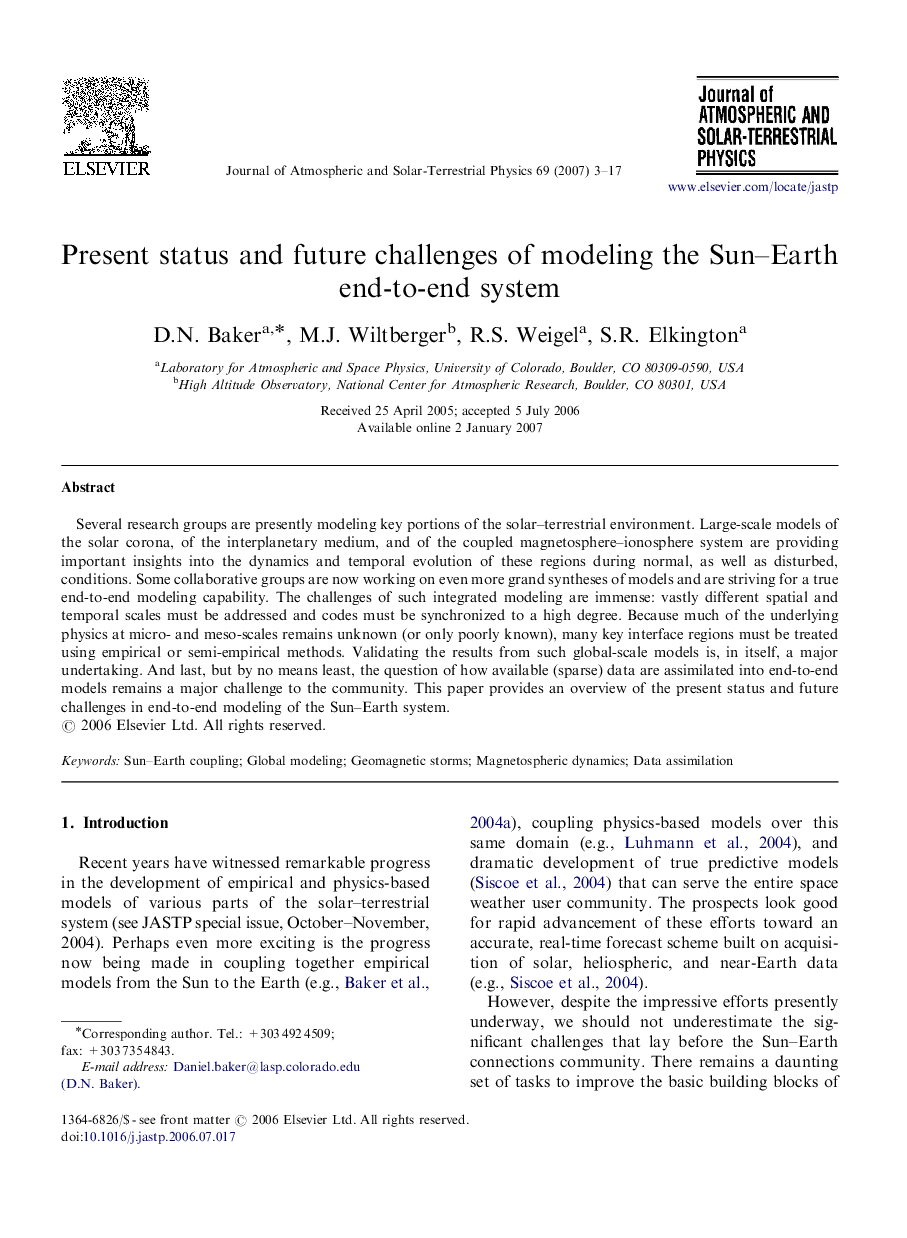| Article ID | Journal | Published Year | Pages | File Type |
|---|---|---|---|---|
| 1778204 | Journal of Atmospheric and Solar-Terrestrial Physics | 2007 | 15 Pages |
Several research groups are presently modeling key portions of the solar–terrestrial environment. Large-scale models of the solar corona, of the interplanetary medium, and of the coupled magnetosphere–ionosphere system are providing important insights into the dynamics and temporal evolution of these regions during normal, as well as disturbed, conditions. Some collaborative groups are now working on even more grand syntheses of models and are striving for a true end-to-end modeling capability. The challenges of such integrated modeling are immense: vastly different spatial and temporal scales must be addressed and codes must be synchronized to a high degree. Because much of the underlying physics at micro- and meso-scales remains unknown (or only poorly known), many key interface regions must be treated using empirical or semi-empirical methods. Validating the results from such global-scale models is, in itself, a major undertaking. And last, but by no means least, the question of how available (sparse) data are assimilated into end-to-end models remains a major challenge to the community. This paper provides an overview of the present status and future challenges in end-to-end modeling of the Sun–Earth system.
